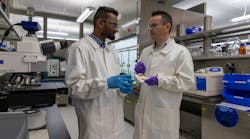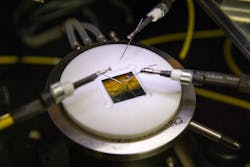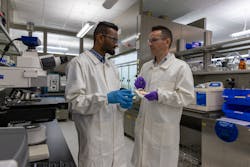The demand for low-cost, flexible wireless communications and applications has stoked interest in wireless energy harvesting innovation. For example, scientists were able to use organic material for a novel design of a semiconductor for radio-frequency circuits. Notably, the organic semiconductor has applicability in 5G applications, according to the group of international scientists led by King Abdullah University of Science and Technology (KAUST).
Basic Principles
Although organic semiconductors share some of the same physical properties as their inorganic counterparts, such as silicon-based semiconductors, there are significant differences. One difference is that inorganic semiconductor molecules are held together by weak van der Waals interactions, whereas organic semiconductors are held together by covalent bonds.
This distinction underscores property variations of devices using organic versus inorganic semiconductors. On the upside, organic semiconductors are made using solvent-based processing techniques, making them cheaper and more flexible for use in printing or blade and die coating, explained Ph.D. student Kalaivanan Loganathan.
On the downside, electrical charges move much slower in organic materials. This drawback is a barrier to applying organic semiconductors for use in fast applications such as radio-frequency electronics, noted the scientists.
“To make this technology useful for the 5G frequency band, there is a need to fabricate organic Schottky diodes,” Loganathan said.
The Schottky diode allows current to pass through in one direction but blocks flow in the other. The most important difference between the more ubiquitous p–n diode and the Schottky diode, noted the scientists, is that the latter can switch from the conducting to the nonconducting state much faster. This makes them essential in radio-frequency applications.
They explained that the speed of Schottky diodes is generally limited by the device capacitance and the resistance. But organic semiconductors are often associated with high capacitance and resistance due to their low charge carrier mobility, the authors said. They are mostly employed in conventional sandwich-type architecture in which the semiconductors, metals and electrical contacts are laid one on top of the other.
Reimagined for 5G Frequency Range Loganathan, working with Professor Thomas Anthopoulos and his team, redesigned the device architecture and placed the two electrical connections side-by-side. The organic semiconductor, referred to as C16IDT-BT, was placed in a tiny gap of just 25 nanometers in between the diodes. The diodes in this structure have an ultralow capacitance and resistance.
The scientists showed that the Schottky diode operated up to a frequency of 6 GHz (6 billion cycles per second). They extended the frequency to 14 GHz by chemically doping the semiconductor with the addition of another molecule.
“Our results show that organic semiconductors are capable of operating in the 5G frequency range, like their inorganic counterpart,” said Loganathan, adding that these organic semiconductors can be mass-manufactured at low cost using solution processing.
The team noted that they hope to integrate their diodes into radio-frequency circuits, ID tags and wireless energy harvesting devices.
The findings were published in Advanced Materials.



